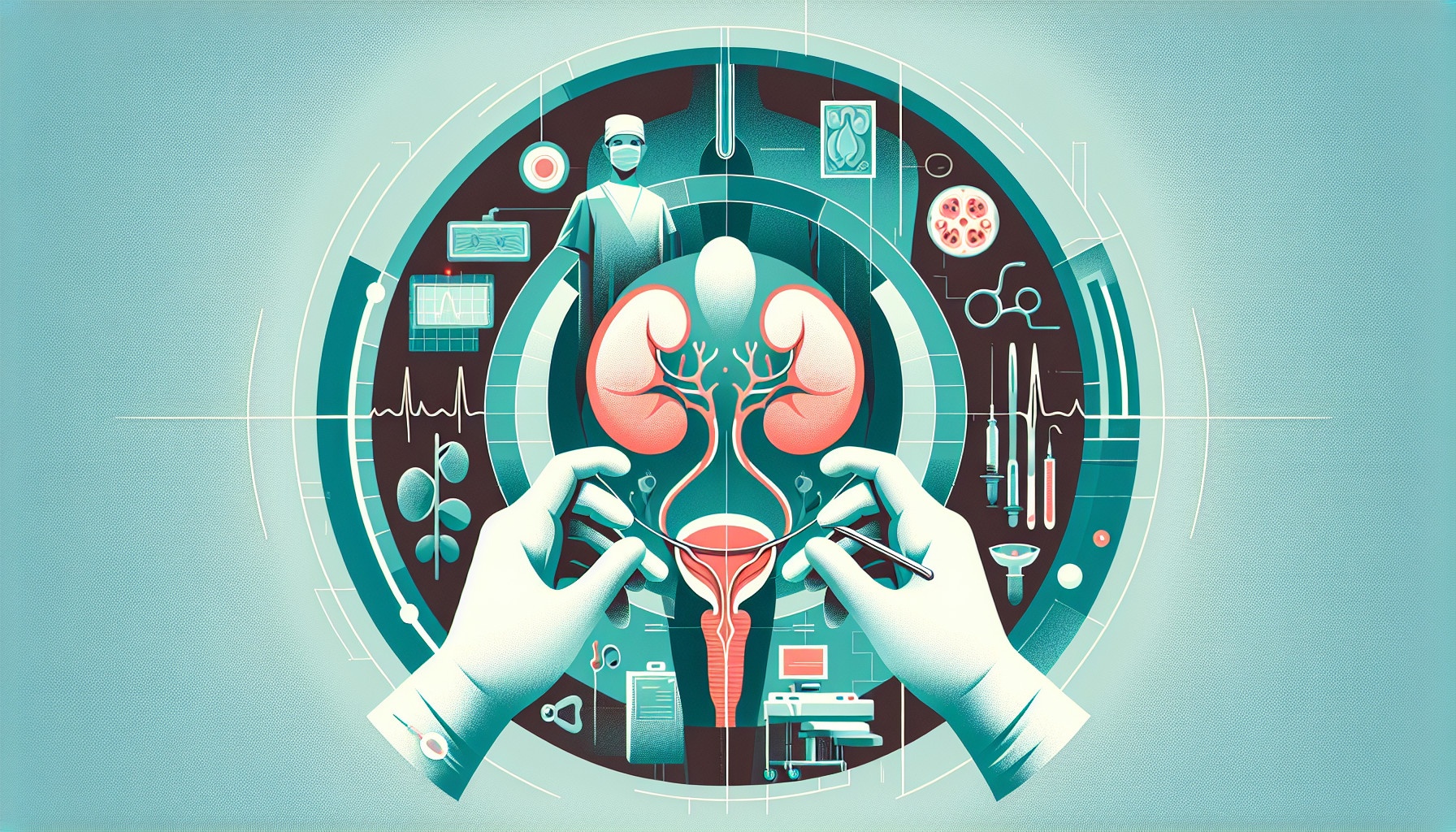Our Summary
This research paper discusses a new surgical technique for bladder repair. Traditionally, bladder surgery has been done using electro-resection (cutting tissue with electricity) and laser lithotripsy (breaking up stones with lasers), but this paper focuses on a different approach: endoscopic suturing. This means using a small camera to guide the surgery and stitching up the bladder from the inside.
The team used this technique to treat two patients with bladder perforations at different hospitals. They inserted a small, 5mm port into the bladder and filled it with gas to make it easier to see and work. Then, using a special tool designed for laparoscopic (minimally invasive) surgery, they stitched up the holes in the bladder.
The procedure was a success in both cases, with no complications during surgery. It only took about 18 minutes to complete, with very little blood loss. In one case, the bladder repair held up for two years after the procedure.
The researchers conclude that this new technique is quick, safe (when performed by an expert), and a good alternative when the patient’s condition requires a less invasive approach.
FAQs
- What is trans-urethral bladder surgery and why is it becoming popular?
- How was the novel technique for bladder defect closure developed and executed by your group?
- What were the results and benefits of using this transurethral bladder suturing technique?
Doctor’s Tip
A helpful tip a doctor might tell a patient about bladder surgery is to follow post-operative care instructions carefully to ensure proper healing and reduce the risk of complications. This may include avoiding heavy lifting, staying hydrated, and taking prescribed medications as directed. It is also important to attend follow-up appointments with your healthcare provider to monitor recovery progress and address any concerns.
Suitable For
Patients who may be recommended for bladder surgery include those with bladder perforation, bladder stones, bladder tumors, bladder diverticula, and urinary incontinence. Bladder surgery may also be recommended for patients with recurrent urinary tract infections, bladder outlet obstruction, or bladder dysfunction. Patients who have not responded to conservative treatments or who have complications related to their bladder condition may also be candidates for bladder surgery.
Timeline
Before bladder surgery:
- Patient may experience symptoms such as frequent urination, urgency, pain or discomfort in the bladder region
- Patient may undergo diagnostic tests such as cystoscopy, imaging studies, and urine tests to determine the need for surgery
- Pre-operative consultations with the surgeon and anesthesiologist to discuss the procedure, risks, and recovery process
- Patient may need to fast before the surgery and follow specific pre-operative instructions
After bladder surgery:
- Patient will wake up in the recovery room and may experience pain or discomfort in the bladder region
- Patient may have a urinary catheter in place to drain urine from the bladder
- Patient will be monitored for any complications such as bleeding, infection, or difficulty urinating
- Patient will receive post-operative instructions on wound care, activity restrictions, and medications for pain management
- Follow-up appointments will be scheduled to monitor the healing process and address any concerns or issues that arise.
What to Ask Your Doctor
- What is the reason for recommending bladder surgery in my case?
- What are the potential risks and complications associated with the surgery?
- What is the success rate of this surgery for my specific condition?
- What is the recovery time and expected outcome after the surgery?
- Will I need to make any lifestyle changes or follow a special diet after the surgery?
- Are there any alternative treatment options available for my condition?
- How many times have you performed this type of surgery, and what is your success rate?
- Will I need to undergo any additional tests or procedures before the surgery?
- What type of anesthesia will be used during the surgery?
- What can I expect during the post-operative period in terms of pain management and follow-up care?
Reference
Authors: Georgiades F, Kouriefs C, Makanjuola J, Grange P. Journal: Urologia. 2022 May;89(2):231-234. doi: 10.1177/03915603211001168. Epub 2021 Mar 16. PMID: 33724089
